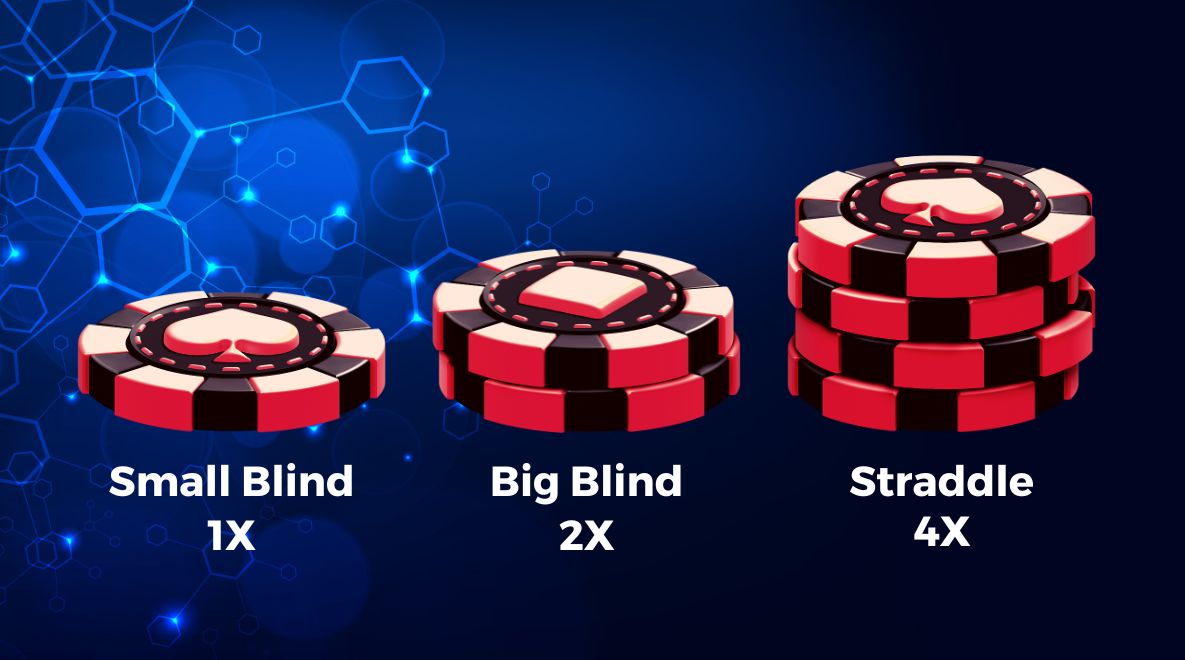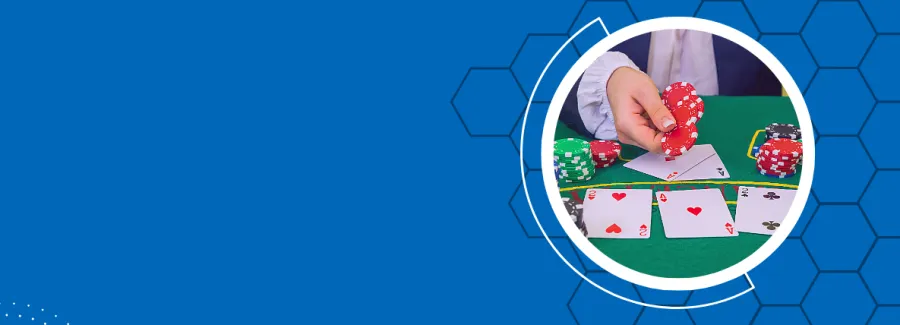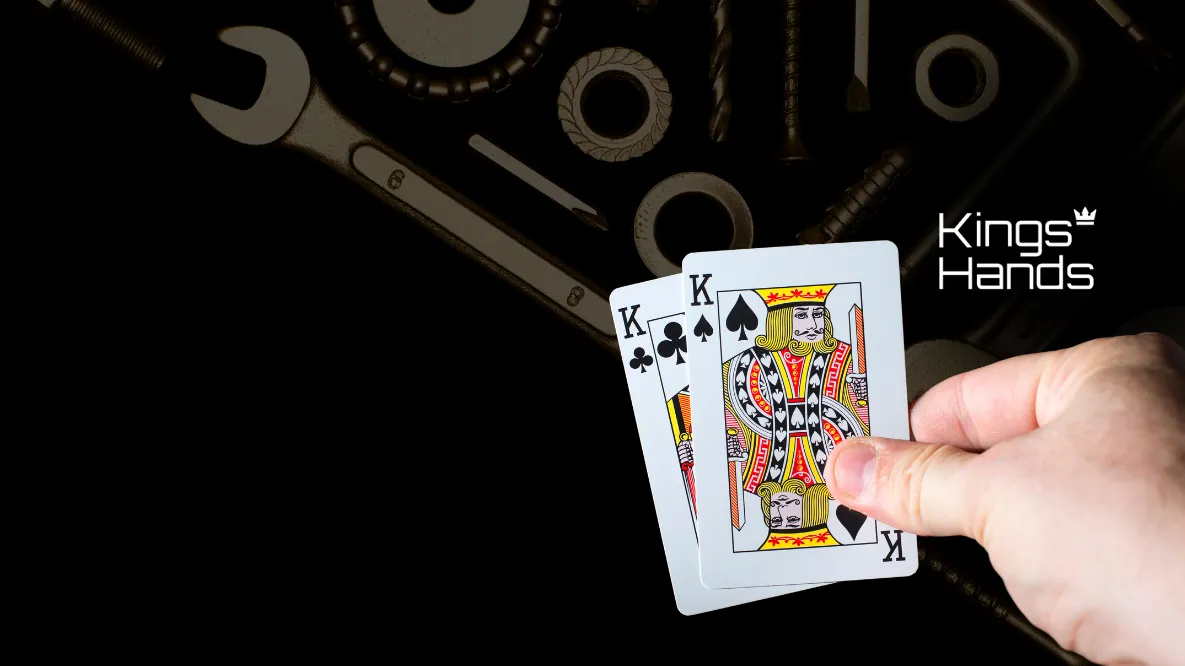Get your mind out of the gutter; we’re not talking about that kind of straddling! A straddle is a type of bet, most commonly found in live cash games, that increases the stakes of the game. If you’re new to the world of live cash games and have no idea what a straddle bet is, then don’t worry; we’re here to break down what it is, the types of straddle bets, and whether or not you should do it.
What is a Straddle Bet?
A straddle bet is a like a third blind that a player voluntarily puts in before the start of the hand. Most commonly, this happens to the left of the big blind; the under-the-gun player doubles the size of the big blind, and as a reward, they get to act last preflop. When a player straddles, the player to their direct left becomes the first to act preflop.
You’ll tend to only find straddle bets in live cash games, as they’re not allowed in tournaments, and the majority of online poker sites don’t support straddles. However, there are some sites, such as PokerStars, which are starting to implement the function into their software to allow players the option to straddle.
When playing a live cash game, most casinos will allow more than one straddle at the table. That means if the under-the-gun player has straddled, the player next to them can also straddle, and so on and so on until you reach the button. Unless you’re playing in a private game, the straddle must stop when it reaches the button.
Many casinos will put a cap on the number of straddles allowed in the game due to how much they increase the size of the game. Each straddle must be at least double the previous blind, so the game grows exponentially with each straddle. For example, in a $5/$10 cash game, the first straddle would be $20, the next $40, the next $80. In just three straddles, the size of the game has increased by 8x.

The Types of Straddle Bet
The most common type of straddle you’ll encounter while playing is the one we’ve already discussed, where the player to the direct left of the big blind is the person to straddle. However, there are several types of straddle that can be seen in cash games, as long as the casino allows it. Let’s take a look at what those are.
- Mississippi Straddle – This straddle can be made from any position at the table, apart from the small or big blind. The player to the direct left of the player who straddled becomes the first to act preflop, and the player who straddled becomes the last to act.
- Sleeper Straddle – This is a unique type of straddle that only becomes active if the action folds to the player who made the straddle. For example, in an 8-handed cash game, the MP player wants to straddle, but they can’t make a Mississippi straddle, so they put out a sleeper straddle. If the UTG and UTG+1 players fold, their straddle becomes active, and the action skips over them to the next player. However, if either player calls or raises, the MP player can take back their straddle and play the hand as normal.
- Button Straddle – The player on the button puts out a straddle of at least 2x the big blind. The action then starts on either the small blind or the under-the-gun player, depending on the casino. Even if the action starts with the under-the-gun player, the button is still last to act preflop. This is because the action skips the button and moves to the small and big blind before returning to the button.
Is Straddling a Good Strategy?
In short, no. Straddling isn’t considered profitable for the same reason that playing from the blinds isn’t profitable – you’re putting money in preflop without looking at your cards. Not only that, you’re increasing the amount you’d usually have to pay, paying at least 2x the big blind for the opportunity to straddle. This means that your win rate from the straddle starts at -200bb/100, which is a lot to make up. Many players can’t make up the -50bb/100 playing from the small blind, so what hope do you have from the straddle?
The only time straddling becomes a neutral EV play is when every other player at the table is doing it. In this situation, everyone is taking the same hit, so you’re not losing compared to other players at the table. Plus, no one wants to be the only person not straddling in a game. By joining in with the group, you show that you’re not a complete nit and are happy to gamble it up every now and again, which may help you get paid off in future hands.
What’s the Point of Straddling?
So if it’s such a negative EV play, why do people straddle? Well, the simple reason is that people like to gamble! When there’s a straddle on, the stakes get bigger, and so do the pots. Plus, as they’ve already put in a couple of big blinds with their straddle, players feel like it’s OK to play speculative hands that they may have had to fold if they were first to act.
As straddling reduces the stack size of the players relative to the blinds, some players who prefer playing with shallower stacks may encourage straddling to try and gain a competitive advantage. If everyone is sitting 200bb deep, just one straddle reduces their stack to 100bb, making the game much shallower. This will benefit the players who have studied 100bb poker, as they won’t be put in tricky deep-stacked spots that they’re not familiar with.
Adjusting to Straddles
So, what should you do if people are straddling in your game? What’s the best way to adjust your strategy? Well, the first thing you need to do in your mind is adjust the size of your stack. Your stack has become a lot shallower since the straddle has come into play, and you need to be aware of that when considering your preflop ranges.
This means that speculative hands, such as suited connectors, low pocket pairs, etc., go down in value, as the stacks aren’t deep enough to profit if you make your hand. Many players think that because everyone has the same amount of money in front of them that they can play the same ranges, but this isn’t the case. You should always be thinking of stack sizes in terms of big blinds, not dollar amounts.
Another important aspect when constructing your ranges is the type of player who is in the straddle. Are they the kind of player who’ll play any two just because they’ve straddled, or are they a nit who’s been bullied into straddling by the rest of the table? If a loose player is in the straddle, you’ll find that your best strategy is to raise with a strong opening range that allows you to punish their wide calling range. Conversely, if a tight player is in the straddle, you can attack it with a wider range of hands to try and take down the dead money.
Summary
Straddling is a fun way to create more action and increase the size of the pot. However, because you’re required to post at least two big blinds without seeing your cards, they’re not a profitable play to make. If you’re trying to become a profitable poker player, it’s best to stay away from straddles.





















